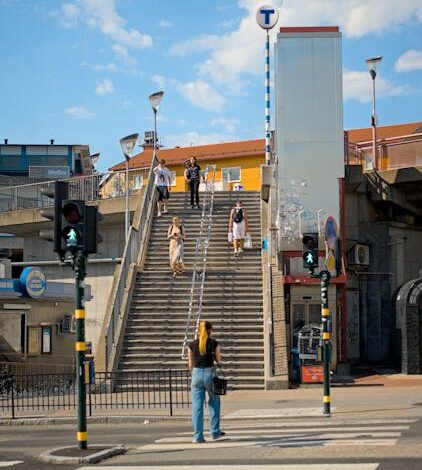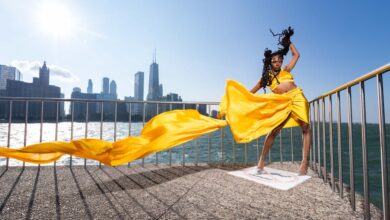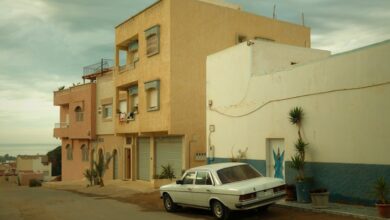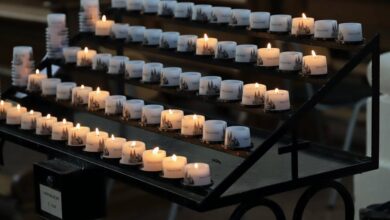When the Abstract Becomes Personal: A Conspiracy Expert’s Ordeal

Imagine dedicating your professional life to dissecting the anatomy of conspiracy theories. You’ve studied their origins, traced their spread, interviewed their believers, and even testified before Congress about their impact. You understand the psychology, the patterns, the predictable turns of events. It’s an intellectual challenge, often a grim one, but always from a certain professional distance. Then, one day, the phenomenon you’ve spent a decade analyzing walks right into your living room – or, more accurately, consumes your living room in a raging inferno.
This isn’t a hypothetical scenario; it’s what happened to Mike Rothschild, a renowned journalist and expert on conspiracy theories, when the Eaton Fire swept through Altadena, California. Suddenly, the academic pursuit became devastatingly personal. He found himself not just observing the aftermath of a tragedy but living it, grappling with the same confusion, anger, and information vacuum that fuels the very conspiracies he studies. His experience offers a unique and invaluable lens into what it’s truly like to be in the middle of a conspiracy theory, not as an academic, but as a survivor.
When the Abstract Becomes Personal: A Conspiracy Expert’s Ordeal
On a gloomy Saturday morning in May, months after much of Altadena burned, survivors gathered at a local church. The air was thick with frustration, anger, and the shared trauma of loss. People recounted their terrifying escapes, the lack of official warnings, and the sheer helplessness as their homes vanished. Then, among the genuine, heart-wrenching stories of neglect and abandonment, a voice cut through: “The firefighting planes were grounded on purpose by Joe Biden so he could fly around LA!”
For Rothschild, a journalist and researcher who had spent ten years immersed in everything from QAnon to anti-vaccine conspiracism, this moment was a collision. He had analyzed countless similar claims after mass shootings and natural disasters. He knew the playbook. But this time, it was different. His own house, a 1925 cottage, was gone. The only official evacuation notice had arrived nine hours after the fires started. He, too, could have died, just like the eighteen Altadena residents who did.
Previously, he’d viewed tragedy survivors with sympathetic but detached professionalism. The conspiracy theories related to their plight would eventually die down, and he’d move on to the next crisis. But now, he was one of those “poor people.” The disinformation was in the room, and it was about his life. He found himself wrestling with a profound question: Did his journalistic duty demand he push back on this wild claim, or did his own sanity require him to stay silent?
Navigating the Fog of Misinformation in Real-Time
The Biden plane theory was just one shard in a whirlwind of rumors, hoaxes, and accusations that followed the Eaton Fire. Rothschild witnessed an explosion of culture-war nonsense, politically charged accusations, and AI-generated slop. Claims ranged from fires being set intentionally for the Olympics or to cover up human trafficking, to accusations that LA had diverted firefighting funds to Ukraine. Even antisemitic tropes emerged, blaming a “wealthy Jewish couple” for controlling the city’s water supply.
Many of these claims originated from familiar “just asking questions” influencers who deploy the same tactics for every disaster. They spread like wildfire across platforms like X, often overshadowing actual breaking news.
The “Just True Enough” Phenomenon
What made many of these claims so insidious was their “just true enough” quality. While Biden did fly into LA around the same time, it was to dedicate national monuments, and flight restrictions were standard security protocols, not a deliberate grounding of firefighting aircraft. These kernels of truth, surrounded by layers of fiction, made them difficult to dismiss outright, especially for a traumatized community desperate for answers.
In this information vacuum, even Rothschild, the expert, felt adrift. His personal circles were abuzz with half-heard news, circulating in group texts and WhatsApp chains. Confusion reigned over who was responsible for the devastation, exaggerated claims about fire department budget cuts, and fears of federal abandonment. He was constantly asked questions by friends, but the “disinformation researcher” was often just as clueless as everyone else, grappling with his own loss and exhaustion.
He saw firsthand how trauma distorts perception. Survivors, overwhelmed by the sudden loss of everything, struggle to piece together the full picture. The human mind craves meaning, especially in the face of senseless calamity. Conspiracy theories offer a neat, if false, narrative, assigning blame and making sense of the incomprehensible.
Beyond the Theories: The Real Threats and Scams
As weeks turned into months, the community faced a grim reality: the insidious spread of misinformation often went hand-in-hand with tangible, predatory threats. Altadena residents were besieged by scammers, grifters, squatters, and thieves. Dodgy contractors, fly-by-night debris removal companies, phony grants, and ransom demands for towed cars became common. Rothschild, despite a decade of helping people recognize scams, watched helplessly as his friends and community, desperate for aid, became “chum for cash-hungry sharks.”
The fear of being conned became easily transmittable. After hearing stories of FEMA applications being blocked due to previous fraudulent filings, Rothschild and his family delayed their own appointment, convinced a legitimate call was a scam. This small act of caution, born from the deluge of fraud, added yet another layer of stress to an already overwhelming situation. When you’re exhausted and dispirited, there are no small things.
Adding to the frustration was the stark contrast between the outlandish conspiracy theories and the very real, existential threats. While gurus peddled tales of lasers and endangered fish, they willfully ignored the undeniable reality: the planet is trying to kill us. Climate change exacerbated the Santa Ana winds, turning dry brush into an inferno. The rapid swings between wet and dry, now known as “climate whiplash,” fed the fires. Yet, the misinformation industry, reliant on denying climate change to maintain its business model, continued to deflect, blame, and obscure the truth with crackpot science and increasingly, AI-generated fake videos.
Empathy, Understanding, and the Journalist’s Duty
Living through this nightmare transformed Rothschild’s understanding of conspiracism. “When you cover disinformation and live through an event creating a massive volume of disinformation, it’s like floating outside your body on an operating table as your heart is being worked on, while also being a heart surgeon,” he reflects. The trauma he experienced provided a deeper, more visceral comprehension of the psychology at play. He now grasps the profound human need to assign meaning to calamity, to point a finger when life makes no sense.
This personal crucible has fostered a greater compassion for trauma victims who turn to conspiracy theories. He understands the allure of easy answers, even outrageous ones, and the temptation to embrace nihilism in the face of unspeakable loss. It’s equally tempting for an expert to mock or belittle those who believe such ideas. But that day in the church, he kept quiet, recognizing that anger and confusion were genuine, even if the scapegoat was not.
Yet, even a journalist who lost his house is still a journalist. Rothschild chose to channel his experience into action, focusing on keeping Altadena’s story alive. He went on TV and radio, blogged, and spoke to anyone who would listen, shifting the narrative from sensationalist theories to the community, its impact, and the long, arduous road to recovery. His personal tragedy underscored a crucial professional lesson: people caught in tragedies are precisely that—caught up. And for those who cling to conspiracy theories, these narratives offer a perverse form of hope and comfort, a reassurance that someone is responsible and will face justice. They find something of value, even if it’s an illusion.
He concludes with a sobering realization: “I could have done it too, throwing away years of experience to embrace conspiracist nihilism in the face of unspeakable trauma. After all, those poor people going through this weren’t just on my TV. They were my friends. They were me. They could be anyone.” In an age of unprecedented misinformation, understanding this human vulnerability isn’t just an academic exercise; it’s a vital step towards finding real solutions and genuine recovery.





